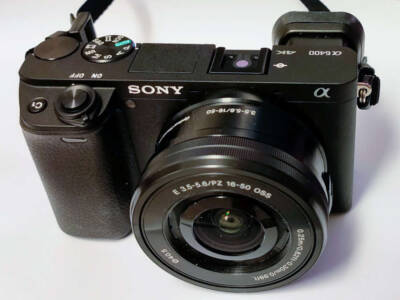Image composition, like most creative things, is both a science and an art form. The interpretation of the finished shot is universal, in other words, when you see a great painting it looks great to most everyone, but the level of conscious thought behind the creation itself and its interpretation is variable. The following is intended to paint with broad strokes the picture at hand, i.e. the feelings and attitudes that are needed to make your decisions resonate, which must ultimately come from you alone.
Strictly by using rules and diagrams you can easily find in a book or on the internet, you can achieve something that works and satisfies the broad requirements of the task, but no more. Using your instinct guided and trained by those same rules, you can achieve something great. Musicians will notice a correlation with how their performance is tied to them letting go and simply ‘being in the moment’, and how well they play. Too much conscious thought interferes with the purity of our actions, it ends up being a distraction to the pure essence of the act at hand; whether a basketball player on a winning streak, or a pianist delivering a once in a lifetime solo performance, one has to let go of the analyzing of the act and simply let the mind and body do what it’s been trained to do. We simply think too slowly for us to do anything that takes any kind of speed and be actively thinking at the same time. But again the key component of this is that you have trained yourself well, ahead of time, and you keep just enough of your conscious mind engaged to keep you on track. If you perform sub par when you are in the moment, then you are either ill-trained or have let yourself go into a careless state, you need to still be fully aware, just not micro-managing. So actively practice, and do it again!
Now that we’ve set the tone, let us walk through the basic principals of composition. (I’m not going to go into the standard models of composition, such as the ‘rule of thirds’ and the ‘golden ratio’, the first of which is easily found elsewhere, and the second of which is simply unfounded, and is best ignored.)
First and foremost, if it looks good, it looks good. This is much more important to pay attention to than many might think. However, for this to be trustworthy, you need to be a trustworthy interpreter. Why do you think it looks good? Are your feelings overly colored by what you want to believe? If you are an objective observer though, and when you see it you KNOW it’s good, then it’s good, or you’re deluded…
Composition is fully controlled by light. How you use that light to tell a story is what all visual art forms are about, and balance is the king of that story. It is the first thing that we recognize in an image, whether video or still, and if it looks balanced you’re well on your way. But here we already come to a question, what makes an image look balanced? Putting your subject in the very center will do it, but that can become overwhelming or tiring. Offsetting your main subject to one side should obviously look unbalanced, but empty space has a type of weight as well, so it’s not necessarily the case. Something that is tall and narrow might look much ‘weightier’ than another that takes up more of the scene, if the former has strong lines and the latter is soft and subdued. In the end it comes down to how attractive it is to our eyes. And by attractive I mean exactly that. Not beautiful, not something pleasant to look at, but attractive as a magnet is attractive to a piece of iron. Simply put, if your eyes are pulled evenly outward from your main viewpoint then the composition will look balanced. This happens through shadows, lines, color, and for motion pictures, through distinct movements. We are primed from millions of years of evolution to look at movement, track it, and analyze it. Even if it’s a still image, if the subject looks to have movement in it ,or has the potential to i.e. crouching, lurking, looking, etc. we process that part first, as it’s most likely to be important to us. Only then can we see the rest of the image you’ve worked so hard to create. And it’s that first impression that will sell the image to your viewer, after that they will simply be looking for things to support the view they just made, which if you’ve done it well will strengthen their view, and if not, to weaken it. So make the first thing their eyes are drawn to count, and go from there.
Look at the frame, how does it make you feel? Put on a beret, get in touch with your artsy self, and let it speak to you… A good idea is to squint or use something to somewhat blur the image to get a sense of proportions, without the distraction of the details, not too much, just enough to take the edge off. Now move your subject or your frame of reference until you see something that looks ‘right’. When you think you have it, start looking at the lines and shapes that are in your frame. Are they leading to where you want the viewer to look? And remember, lines in this context are not ‘lines’ that you might draw with a pen, but the lines that define the overall flow of the shapes, shadows, and colors in the scene.
The juxtaposition of dark and light is what gives an image character, whether subtle or stark, or using bold lines or subdued gradients, but it’s usually a combination of these features that makes an image or scene fully come to life. This is what is known collectively as ‘texture’, the overall feel of the frame due to the contrasting elements of the shot.
Color comes next. Bright, bold, vibrant, subdued, soft, garish, clashing, these are a few of the words we use to describe colors. Color needs to be thought of as the last layer of paint, but not the object itself. The object is the light and darkness of the object. Color, if used, is the final touch on the composition. After all other aspects have been looked into then color comes into play. As is dark and light color also has ‘weight’ and needs to be taken into account after the main shadows, highlights, and main contrast are accounted for. Now we can see how the colors are interacting, and whether they are competing with, or complementing, the overall character of the scene. Look for the overall tone of the colors as well as the specifics of how they are interacting. Often we see what we expect to see, not what is actually there in the image. Your viewer however may not be expecting the same thing as you and see something entirely different. So to you the image is a deep golden magenta due to the setting sun, but unless your shot lets them know that the sun is setting, it may instead simply look poorly white balanced. That may be a rather obvious example, but it applies broadly.
Now come the details that may have gone unnoticed up to now. The hair out of place, the smudge on the table, the shadow obstructing a feature you want to show, these are the small things that make or break otherwise good composition. That said, it is quite easy to make a shot look artificial and staged when you may want it to look raw. But don’t be afraid to alter your staging or move in a tasteful prop as long as it’s done with an eye to how it actually looks, not how you want it to look.
Does your subject blend in with the background? Should they? Does it stick out too much and simply float above an overly blurry haze? Are the colors clashing? Is there something in the background or foreground that isn’t ideal? take the time to change it. And what exactly is your subject? And I mean WHAT IS your subject? Yes, it’s a portrait of a girl. But why is she there? Where will she be going? If you can answer some basic questions about your subject, (or even better, have the viewer be intrigued enough to ask), and let the subject and the background! help tell their story, your scene has the makings of something truly brilliant.
Answer, then change the scene, snap your frame or take a clip, and ask again. Over, and over, and over. Ask, change, ask, change… When you get bored, move on to something else and then do it again. But just as in every part of life, never stop asking “how can I make it better? How can I make me better?”.
Then get back to your editing space, wherever and whatever that may be, and look at what you’ve done in more detail. Here, focus on the parts that you like about it. Anything at all that you appreciate about what you’ve just done, even if everything is overexposed and blurry find at least one thing that you enjoy no matter how slight. Do you like the smile, the reflection, the grit, the motion? What can you find? Take a note of those things, attach it to the image, and go back and find those things that you liked and recreate it, but this time make those good things even better, even if only slightly. If that particular aspect can’t in itself be improved, then improve it by proxy. Make the rest of the frame support the good parts, either by compliment or contrast. Remember, moving towards a goal with thought and determination will always get you closer to that goal, regardless of how it appears, skill is secondary and should be viewed as simply the speed at which you can accomplish a task, not whether or not you can…
And lastly, remember that these ideas are for you to practice, once repeated enough they start to creep in naturally to what you are doing and you won’t need to force it, merely be aware of them. But during practice you need to focus sharply on what you are doing to train yourself to eventually act without undue interference.




